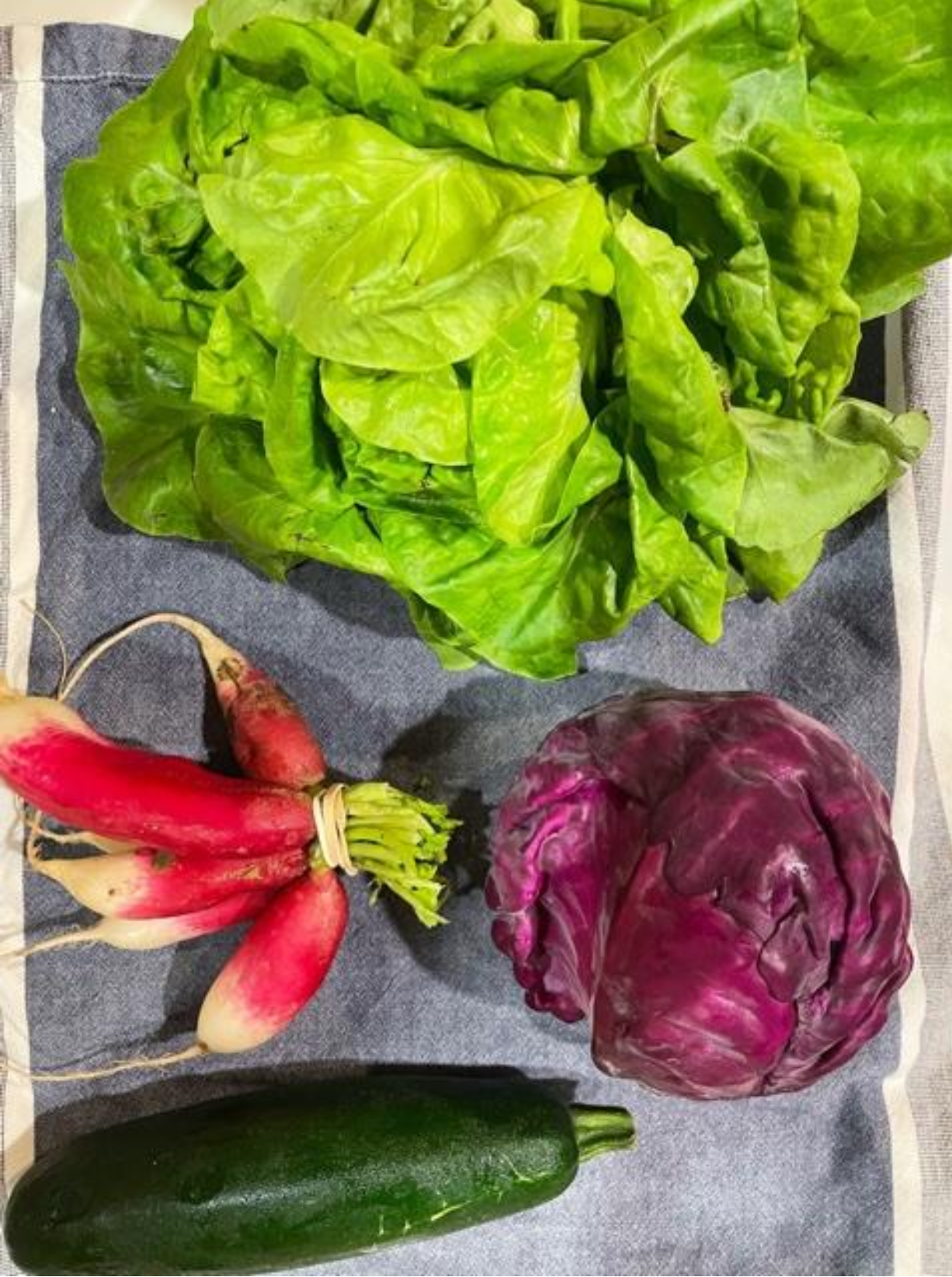From Donabe - Classic and Modern Japanese Clay Pot Cooking.
Shared by CSA member Salome Blignaut
Featured CSA veggies: green cabbage, carrot, potato, broccoli
Notes on the cookbook: I’ve found that many of the recipes in this beautiful book feature ingredients or cooking methods that can make it a stretch to incorporate regularly into my cooking. However, I wanted to share one of a few wonderful, classic stews (nabe) that can easily be adapted to be made vegetarian, to use of vegetables on-hand, and can be cooked in any pot on the stovetop (no donabe required). This particular miso hot pot is rich, comforting, and immune-supportive in cool weather.
KYOTO-STYLE SAIKYO MISO HOT POT SAIKYO NABE
SERVES 4
EQUIPMENT: One 2.5-quart/2.5 L or larger classic-style donabe
VEGAN OPTION: Omit the pork or use tofu
SHIME (FINISHING COURSE) SUGGESTION: Add ramen to the remaining broth.
Pinch of sea salt
1/2 head green cabbage (about 10 ounces/300 g), cut into strips
1 medium carrot (about32 ounces/100 g), julienned into 1/8-inch (3 mm) strips
1 head broccoli (about 8 ounces/240 g), cut into bite-size pieces
1 russet or white potato (about 8 ounces/240 g), peeled and julienned into 1/4-inch (5 mm) strips 1 pound (450 pork belly, cut into bite-size pieces
4 cups (1 L) kombu and Bonito Dashi
Saikyo miso or other sweet white miso
2 tablespoons white sesame paste (tahini is fine)
1/2 teaspoons unseasoned rice vinegar or more if desired
Karashi (Japanese mustard),
for serving: can substitute Dijon mustard for a milder flavor
“We tasted this nabe dish at the historic headquarters of the Saikyo miso maker Honda Miso in Kyoto, and we fell in love with the creamy broth and elegant flavor. The secret ingredient is a splash of vinegar, which adds a refreshing accent to the sweet miso flavor. You can also adjust the amount of Saikyo miso in this dish according to your taste."—Naoko
To cook the vegetables and meat. Bring a medium pot of water to a boil and add a generous pinch of salt. Add the cabbage and blanch until it's partly cooked but still crisp, about 30 seconds. Strain the cabbage out of the water and let it cool down.
Using the same pot of water, repeat the process, first for the carrot and then for the broccoli, blanching each for 30 to 60 seconds.
Finally, blanch the potato in the same pot of water for about 2 minutes, until slightly tender, and drain.
Heat a sauté pan over medium and sauté the pork belly pieces just until the meat is cooked through, 2 to 3 minutes. Using a slotted spoon, transfer to a plate lined with paper towels to drain.
To make the broth: Pour the dashi into the donabe, cover, and set over medium-high heat. As soon as the broth starts to boil, turn down the heat to simmer. In a bowl, whisk together until smooth the Saikyo miso and sesame paste with a ladleful of broth from the donabe, and then stir the mixture into the donabe.
Add the cabbage, potato, and pork belly, side by side, followed by the broccoli and carrot, pushing them between the other ingredients. Cover and bring back to a simmer and cook for another 3 to 5 minutes. Turn off the heat and drizzle with the vinegar.
Serve in individual bowls at table, with the karashi on the side.







